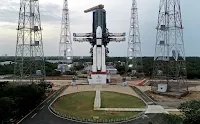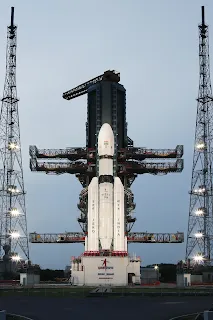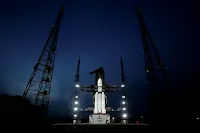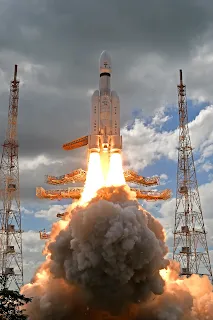Large Language Models (LLMs) have emerged as one of the most transformative breakthroughs in the field of Artificial Intelligence (AI) and Natural Language Processing (NLP). These models have revolutionized the way machines process and generate human language, opening up new possibilities for communication, automation, and human-machine interaction.
The journey of LLMs traces back to the early days of AI research when linguists and computer scientists began exploring ways to enable machines to understand and generate human language. The 1950s and 1960s saw the development of early language processing systems, but it wasn't until the 1980s that researchers made significant strides in the domain of NLP.
In the late 1980s and early 1990s, statistical models like Hidden Markov Models and n-grams gained popularity in language processing tasks, such as speech recognition and machine translation. However, these models had limitations in handling complex language structures and lacked the ability to understand contextual nuances.
Large Language Model after 2018
The turning point for LLMs came in 2013 with the introduction of Word2Vec, a neural network-based model developed by Tomas Mikolov and his team at Google. Word2Vec used a technique called word embeddings to represent words in a continuous vector space, capturing semantic relationships and contextual information. This breakthrough paved the way for more sophisticated language models that could understand relationships between words and their context.
In 2018, OpenAI released the GPT (Generative Pre-trained Transformer) model, designed to predict the next word in a sentence using the transformer architecture. GPT marked a significant step forward in LLMs, utilizing a large neural network with multiple layers and self-attention mechanisms. This allowed the model to understand the context of a sentence and generate coherent and contextually relevant responses.
The real breakthrough, however, came with the release of GPT-3 in 2020 by OpenAI. GPT-3 is one of the largest language models to date, with a staggering 175 billion parameters. Its massive size enabled it to perform a wide range of language tasks, from translation and summarization to coding and conversation, all with remarkable accuracy.
GPT-3's capabilities have sparked excitement and debate about the potential applications and ethical implications of such powerful AI language models. While it has demonstrated impressive language understanding and generation, questions regarding bias, data privacy, and responsible use of AI have also been raised.
Beyond GPT-3, the race to build even larger and more capable language models continues. Several organizations and research teams are investing heavily in developing and fine-tuning their models to tackle increasingly complex language tasks. These models are likely to have profound implications for various industries, including healthcare, customer service, education, and content creation.
However, as LLMs become more pervasive, there is a growing emphasis on ethical considerations and transparency. Ensuring that these models are developed responsibly, with adequate safeguards against misuse, is a critical challenge for the AI community.
In conclusion, the history of Large Language Models is a testament to the relentless pursuit of advancing AI capabilities in understanding and processing human language. From humble beginnings with statistical models to the massive neural networks of today, LLMs have significantly transformed the landscape of AI and NLP. As researchers and developers push the boundaries further, the responsible development and deployment of these powerful models become paramount for a future where AI augments human potential while addressing societal needs and concerns.
What are the some large language models, and when and where those get developed?
As of my last update in September 2021, there were several large language models developed by different organizations. Here are some prominent examples and their development timelines:
1. GPT (Generative Pre-trained Transformer)
- Developed by: OpenAI
- Development Timeline: Introduced in 2018
- Description: GPT was one of the first large-scale language models to use the transformer architecture and pre-training techniques to generate human-like text. It laid the foundation for subsequent models like GPT-2 and GPT-3.
2. GPT-2 (Generative Pre-trained Transformer 2)
- Developed by: OpenAI
- Development Timeline: Released in February 2019
- Description: GPT-2 is an advanced version of the original GPT model with 1.5 billion parameters, making it even more powerful in generating coherent and contextually relevant text.
3. GPT-3 (Generative Pre-trained Transformer 3)
- Developed by: OpenAI
- Development Timeline: Introduced in June 2020
- Description: GPT-3 is one of the largest language models to date, with a staggering 175 billion parameters. Its massive size enables it to perform a wide range of language tasks with impressive accuracy, from translation and summarization to code generation and conversation.
4. BERT (Bidirectional Encoder Representations from Transformers)
- Developed by: Google AI Language
- Development Timeline: Introduced in October 2018
- Description: BERT is a transformer-based model that uses bidirectional attention to better understand the context of words in a sentence. It significantly improved the performance of various NLP tasks, including sentiment analysis, question answering, and named entity recognition.
5. XLNet
- Developed by: Google Brain and Carnegie Mellon University
- Development Timeline: Released in June 2019
- Description: XLNet is another transformer-based language model that combines the ideas of autoregressive and bidirectional pre-training. It achieved state-of-the-art results on multiple NLP benchmarks.
6. RoBERTa (A Robustly Optimized BERT Pretraining Approach)
- Developed by: Facebook AI Research (FAIR)
- Development Timeline: Released in October 2019
- Description: RoBERTa is a variant of BERT that optimizes the pre-training process, leading to improved performance on a wide range of NLP tasks.
7. T5 (Text-to-Text Transfer Transformer)
- Developed by: Google Research Brain Team
- Development Timeline: Introduced in January 2020
- Description: T5 is a text-to-text transformer that frames all NLP tasks as a text-to-text problem. It showed promising results in transfer learning and few-shot learning settings.
Please note that the field of NLP and AI is rapidly evolving, and new language models may have been developed or updated since my last update. For the most current information, I recommend referring to official publications and announcements from the respective research organizations.
References
1. "Improving Language Understanding by Generative Pre-Training" by Alec Radford, Karthik Narasimhan, Tim Salimans, and Ilya Sutskever. (2018)
2. "Language Models are Unsupervised Multitask Learners" by Alec Radford, Karthik Narasimhan, Tim Salimans, and Ilya Sutskever. (2019)
3. "Language Models are Few-Shot Learners" by Tom B. Brown, Benjamin Mann, Nick Ryder, and et al. (2020)
4. "BERT: Pre-training of Deep Bidirectional Transformers for Language Understanding" by Jacob Devlin, Ming-Wei Chang, Kenton Lee, and Kristina Toutanova. (2019)
5. "XLNet: Generalized Autoregressive Pretraining for Language Understanding" by Zhilin Yang, Zihang Dai, Yiming Yang, Jaime Carbonell, Ruslan Salakhutdinov, and Quoc V. Le. (2019)
6. "RoBERTa: A Robustly Optimized BERT Pretraining Approach" by Yinhan Liu, Myle Ott, Naman Goyal, Jingfei Du, Mandar Joshi, Danqi Chen, Omer Levy, Mike Lewis, Luke Zettlemoyer, and Veselin Stoyanov. (2019)
7. "Exploring the Limits of Transfer Learning with a Unified Text-to-Text Transformer" by Colin Raffel, Noam Shazeer, Adam Roberts, Katherine Lee, Sharan Narang, Michael Matena, Yanqi Zhou, Wei Li, and Peter J. Liu. (2020)





